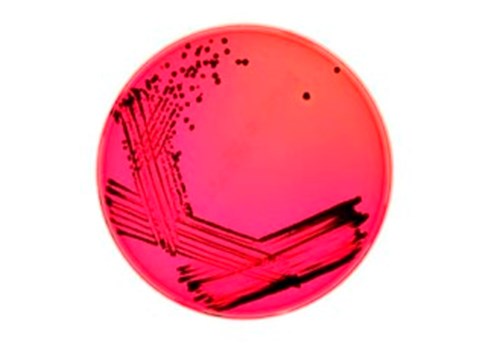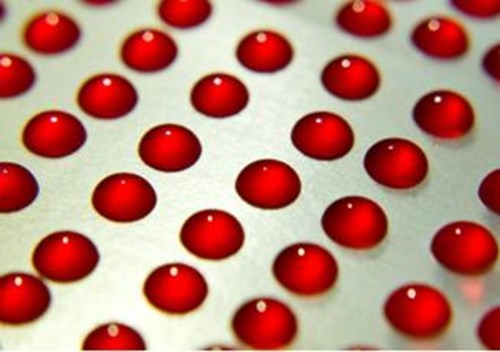NCTC in research: Rapid detection method for Salmonella species in animal feed

Image: Salmonella spp on selective XLD agar
WHO estimates that 1 in 10 people fall ill from eating contaminated food every year and 420 000 die as a result1. Salmonella infection is a major global cause of foodborne disease and is frequently transmitted as a result of the consumption of contaminated foods of animal origin; contamination in animal feed is known to be a contributing factor. Batches of animal feed are tested for Salmonella contamination in accordance with the international standard method: ISO 6579:2002 Microbiology of food and animal feeding stuffs -- Horizontal method for the detection of Salmonella spp2. However, rapid methods for identifying Salmonella-free samples are being developed, one of which involves the use of a loop-mediated amplification (LAMP) technique with the potential to reduce the turnaround time for negative results from three to two days. This method was recently validated by M D’Agostino et al (2016) using various Salmonella serotypes and NCTC strains in LENTICULE® disc format, a microbial preservation technology developed by PHE scientists in the 1990’s3.
LAMP is a technique for DNA amplification, differing from the more commonly adopted polymerase chain reaction (PCR) techniques because LAMP is performed at a constant temperature with no need of a thermocycler. To validate whether LAMP, in conjunction with standard culturing techniques (LAMP/ISO), could reduce the turnaround time for releasing samples that are free of Salmonella contamination, a LAMP method was compared directly with the ISO 6579:2002 method, then further tested in an inter-laboratory study involving food testing laboratories in several European countries.
Contaminated samples were used for the direct comparison of the two methods. However, for the inter-laboratory study, samples of animal feed known to be negative for Salmonella were deliberately contaminated with LENTICULE discs of Salmonella enterica subsp. enterica serovar Typhimurium (low and medium levels) or blank LENTICULE discs (containing no detectable bacteria) to improve sample homogeneity, reduce costs and for logistical reasons. The LENTICULE discs were coded by the organising laboratory such that the test laboratories did not know the contents of the discs they added to the fed samples.

Image: LENTICULE® discs
LENTICULE discs are established reference materials that contain certified quantities of pure cultures of NCTC strains. The discs can sustain short periods at ambient temperature, such as during transportation, with no affect to viability. Following primary enrichment, samples tested in accordance with the ISO method were subcultured to the secondary enrichment broth then plated onto selective agar. For samples tested using the LAMP/ISO method, an aliquot from the primary enrichment culture was transferred to the LAMP-friendly broth and tested in accordance with the LAMP protocol. Biochemical confirmatory tests were performed where presumptive results were seen.
Both methods showed 100% sensitivity in the direct comparison study. In addition, inclusivity (99%) and exclusivity (100%) rates were calculated for the LAMP/ISO method using a wide range of strains, many of which were NCTC cultures. Only one strain, S. enterica subsp. arizonae (NCTC 7301), was not detected by the LAMP/ISO method; it is unclear why this strain failed to amplify. Nevertheless, the authors concluded that the LAMP/ISO combination method is a suitable alternative to the ISO method for reducing the turnaround time for releasing Salmonella-free batches of animal feed.
The use of multiple, varied strains and certified reference materials in method validations such as this is invaluable. It enables laboratories to test methods to their detection limits and can confirm whether or not a proposed method is suitable and fit for purpose.
References
